|
This white morph Red-footed Booby image was created with the Canon EF 200-400mm f/4L IS USM Lens with Internal 1.4x Extender (hand held at 381mm) and the Canon EOS-1D X. ISO 800. Evaluative metering +2/3 stop: 1/160 sec. at f/4. Two sensors above and one to the right of the central sensor/AI Servo-Surround/Rear Focus AF on the bird’s neck active at the moment of exposure. Click here if you missed the Rear Focus Tutorial. This was one of the very first images that I made on what turned out to be a magical morning. White morph red-footeds make up less than 5% of the population. |
Wow-What a Morning!
We awoke at 4:30am on Day 2. Breakfast at 5am. In the Zodiacs by 5:50 am. And landing at six sharp. Tower Island’s Darwin Bay ranks as one of the world’s great wildlife photography destinations, right up there with the best of East Africa, the best of South Georgia and Antarctica, and the best of Japan in winter. After the wet landing you are left wondering what to photograph first; the opportunities can be overwhelming. On this morning there were groups of Red-footed Boobies on the beach collecting nesting materials with others flying in in rapid succession to join them.
|
This dark morph Red-footed Booby image was created with the Canon EF 200-400mm f/4L IS USM Lens with Internal 1.4x Extender (hand held at 400mm) and the Canon EOS-1D X. ISO 800. Evaluative metering +1 2/3 stops: off the grey sky: 1/1250 sec. at f/4. Central sensor/AI Servo Surround/Rear Focus AF on the bird’s face active at the moment of exposure. Click here if you missed the Rear Focus Tutorial. Click on the image to see a larger version. |
Flight Opportunities
With a big cloud to the east, several in the group thought that flight photograph would be impossible. But an f/4 lens with ISO 800 yielded more than enough shutter speed for flight. I had everyone sit in order to move the backgrounds effectively away from the subjects. Even at f/5.6 and ISO 400 yielded shutter speeds in the 1/500 to 1/640 sec. range, just at the lower end of my range for creating sharp flight images. The white morphs would gain you an extra 2/3 to a full stop of shutter speed as you properly exposed for their bright whites.
As I reviewed the images on my laptop before lunch I began to realize that the new 200-400 would shape up to be an incredible hand hold-able flight lens….
|
This white morph Red-footed Booby image was created with the Canon EF 200-400mm f/4L IS USM Lens with Internal 1.4x Extender (hand held at 325mm) and the Canon EOS-1D X. ISO 800. Evaluative metering +1 1/3 stops off the grey sky: 1/1000 sec. at f/4. Central sensor/AI Servo Surround/Rear Focus AF on the bird’s face active at the moment of exposure. Click here if you missed the Rear Focus Tutorial. Click on the image to see a larger version. |
Flight Photography with the Canon EF 200-400mm f/4L IS USM Lens with Internal 1.4x Extender
Aside from a bit of fatigue toward the end of the hour long session, the 200-400 was a dream flight photograph lens. Being able to zoom a bit wider as the birds approach is a huge advantage over using a fixed focal length lens. With a bit of concentration and practice clipped wings will become rare rather than commonplace; universal tips for flight photography with a zoom lens: zoom wider. The lens is of course deadly sharp. And for more distant subjects simply sliding the lever down to engage the internal 1.4X TC is fast and easy and results in your hand holding a 280-560mm zoom lens.
|
This female Great Frigatebird image was created with the Canon EF 200-400mm f/4L IS USM Lens with Internal 1.4x Extender (hand held at 325mm) and the Canon EOS-1D X. ISO 800. Evaluative metering +2 1/3 stops off the light grey sky: 1/800 sec. at f/4. Central sensor/AI Servo Surround/Rear Focus AF on the bird’s face active at the moment of exposure. Click here if you missed the Rear Focus Tutorial. Click on the image to see a larger version. |
White Sky Flight
Many bird photographers shy away from photographing birds in flight against light grey skies that are rendered white when dark subjects are properly exposed. It is one of my favorite situations. Just be sure, as above, to add lots of light.
Your Favorite?
Please take a moment to leave a comment and let us know which of the four images is your favorite. And do let us know why. I have a first favorite and a second favorite and will share them with you somewhere down the line.
Bucket List?
If visiting the Galapagos is on your bucket list and you are a happy camper who is serious about joining us on our July 2015 trip, please shoot me an e-mail and ask to be placed on the interested list. There simply is no better Galapagos Photo Tour.
|
Snow Goose composite, Bosque del Apache NWR, San Antonio, NM. Click on the image for a larger version. |
Bosque del Apache 2013 IPT: “The Complete Bosque Experience.” NOV 26-DEC 2, 2013. 7-FULL DAYS: $3399. Co-leader: Denise Ippolito. Introductory Slide program: 6:30 pm on 11/25. Limit: 12.
Tens of thousand of Snow Geese, 10,000 Sandhill Cranes, ducks including point-blank American Wigeon and Wood Duck, amazing sunrises, sunsets, and blast-offs. Live, eat, and breathe photography with one of (if not the) world’s premier photographic educators at one of his very favorite locations on the planet. Top-notch Photoshop instruction. This will make 19 consecutive Novembers at Bosque for me. Nobody knows the place better than I do. Join us to learn to think like a pro, to recognize situations and to anticipate them based on the weather, especially the sky conditions, the light, and the wind direction. Every time we make a move we will let you know why. When you head home applying what you learned will prove to be invaluable. Includes all lunches and the Thanksgiving Buffet at the Crowne Plaza in Albuquerque. I hope that you can join me for what will be an unparalleled learning experience.
There is never a strict itinerary on a Bosque IPT as each day is tailored to the local conditions at the time and the weather. We are totally flexible in order to maximize both the photographic and learning opportunities. There is an introductory slide program on the night before the tour begins. We are up early each day leaving the hotel by 5:30 am to be in position for sunrise. After 18 years we pretty much know where to be when in what sky conditions and what winds. We usually photograph until about 10:30am. Then it is back to Socorro for lunch and then a classroom session with the group most days. We head back to the refuge at about 3:30pm each day and photograph until sunset. Then dinner with the group most nights. We always spend at least one afternoon at the ponds at the Albuquerque Zoo doing Wood Ducks and usually two mornings at New Mexico Tech doing American Wigeons. The rest is Snow Geese and Sandhill Cranes with the emphasis on expanding both your technical skills and your creativity.
A $500 non-refundable deposit is required to hold your slot for this IPT. Your balance is due 4 months before the date of the IPT and is also non-refundable. If the trip fills, we will be glad to apply a credit applicable to a future IPT for the full amount less a $100 processing fee. If we do not receive your check for the balance on or before the due date we will try to fill your spot from the waiting list. If your spot is filled, you will lose your deposit. If not, you can secure your spot by paying your balance.
Please print, complete, and sign the form that is linked to here and shoot it to us along with your deposit check (made out to “Arthur Morris.”) You can also leave your deposit with a credit card by calling the office at 863-692-0906. If you register by phone, please print, complete and sign the form as noted above and either mail it to us or e-mail the scan. If you have any questions, please feel free to contact me via e-mail.
Typos
On all blog posts, feel free to e-mail or leave a comment regarding any typos, wrong words, misspellings, omissions, or grammatical errors. Just be right. 🙂
Support the BAA Blog. Support the BAA Bulletins: Shop B&H here!
We want and need to keep providing you with the latest free information, photography and Photoshop lessons, and all manner of related information. Show your appreciation by making your purchases immediately after clicking on any of our B&H or Amazon Affiliate links in this blog post. Remember, B&H ain’t just photography!




Support the Blog


Amazon
Everyone buys something from Amazon, be it a big lens or deodorant. Support the blog by starting your search by typing in the little white box below. No purchase is too small to be appreciated; they all add up. Why make it a habit? Because I make it a habit of bringing you new images and information on an almost daily basis.
And from the BAA On-line Store:
LensCoats. I have a LensCoat on each of my big lenses to protect them from nicks and thus increase their re-sales value. All my big lens LensCoat stuff is in Hardwood Snow pattern.
LegCoat Tripod Leg Covers. I have four tripods active and each has a Hardwood Snow LegCoat on it to help prevent further damage to my tender shoulders 🙂 And you will love them in mega-cold weather….
Gitzo GT3532 LS CF Tripod. This one replaces the GT3530LS Tripod and will last you a lifetime. Learn more about this great tripod here.
Mongoose M3.6 Tripod Head. Right now this is the best tripod head around for use with lenses that weigh less than 9 pounds. For heavier lenses, check out the Wimberley V2 head.
Double Bubble Level. You will find one in my camera’s hot shoe whenever I am not using flash.
The Lens Align Mark II. I use the Lens Align Mark II pretty much religiously to micro-adjust all of my gear an average of once a month and always before a major trip. Enjoy our free comprehensive tutorial here.
BreezeBrowser. I do not see how any digital photographer can exist without this program.
Delkin Flash Cards. I use and depend on Delkin compact Flash Cards and card readers most every day. Learn more about their great 700X and 1000X cards here or about my favorite Delkin card here.

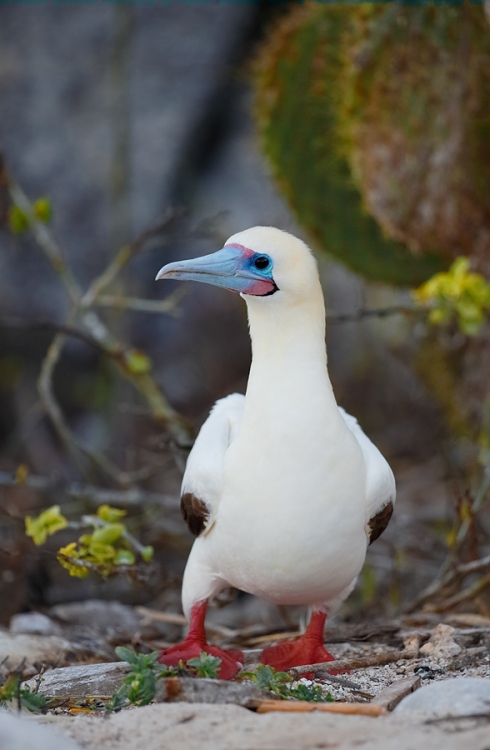
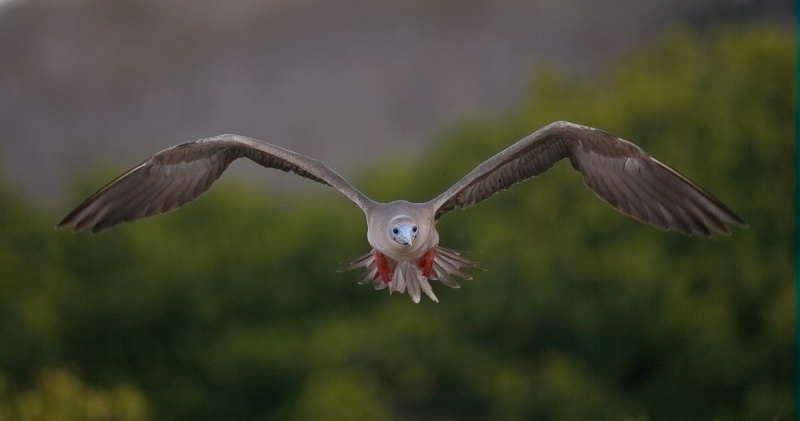
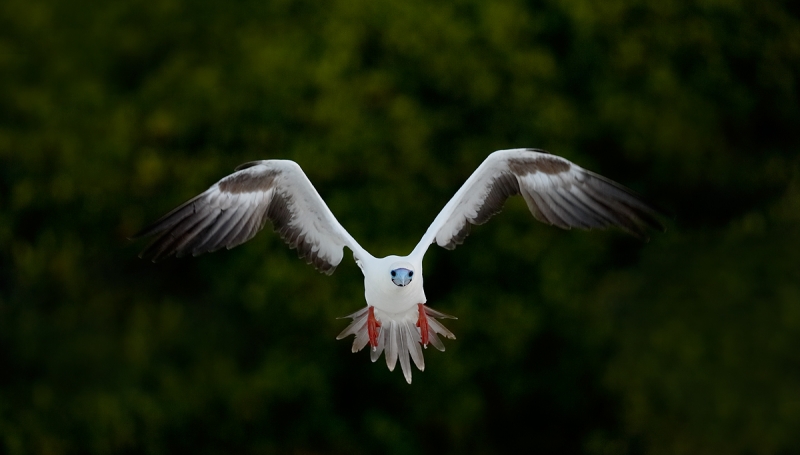
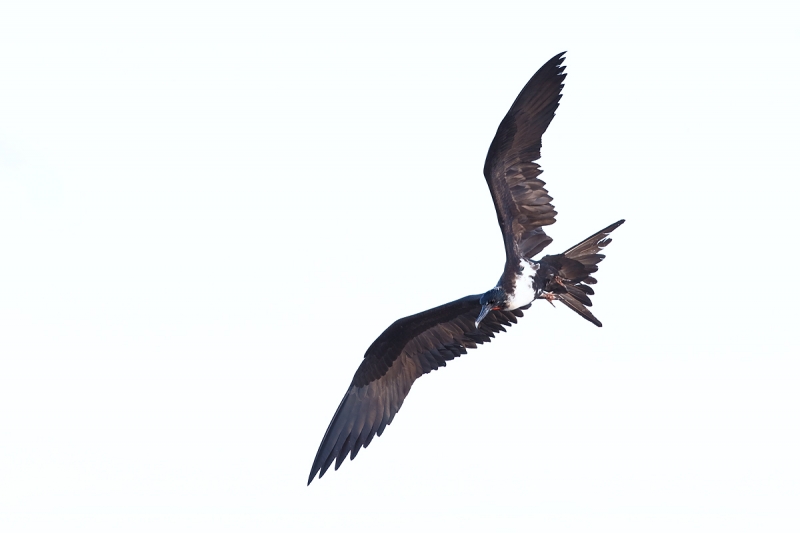
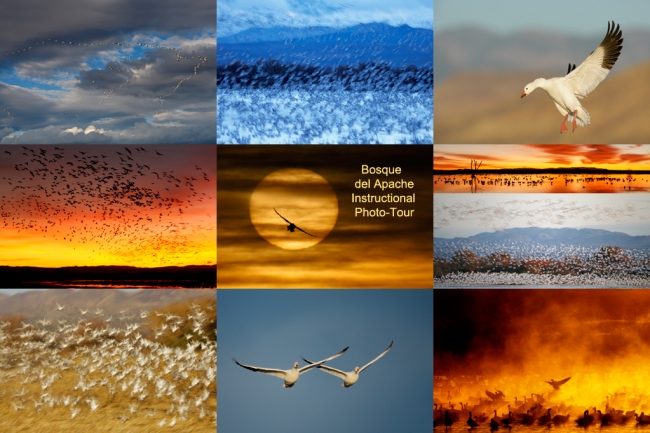













Awesome images and I need to check out that lens!
The two flying morphs get my vote ….with a nod to the dark morph…
Love that the smudged green tree line parallels the bird’s wing…
I like the third one … interesting morph, good contrast between bird and background, wings with dynamic shape and expressive eyes!
My favorite is the first image , the vertical shot enables the viewer to see the birds surroundings with realism due to your choice of dof. Composition is right on which leads the viewer to the Red footed Booby and beyond to the out of focus background. Great job
Hi Artie, all wonderful images! My favorite is the second one followed by Frigate bird. Have you decided on the 2014 trip yet?
Thanks Indranil. There will be no 2014 trip. Let me know if you are interested in July 2015. As you will see in the coming blog posts, the best-ever itinerary is getting even better.
My favourite is the third one with the fourth a close second. I would be proud to have captured all 4 images. My name is on the list for the lens and I have no idea as to when I will get it.
Welcome home! My favorite is the first image of the white-morph Red-footed Booby.The out-of-focus elements in the background give the viewer a sense of the bird’s habitat, which I like. Nice job keeping the cactus from merging with the bird’s head. A close second is the in-flight white-morph with the beautifully fanned tail feathers.
Thanks Andrew. I need to Fract a few Galapagos images :).